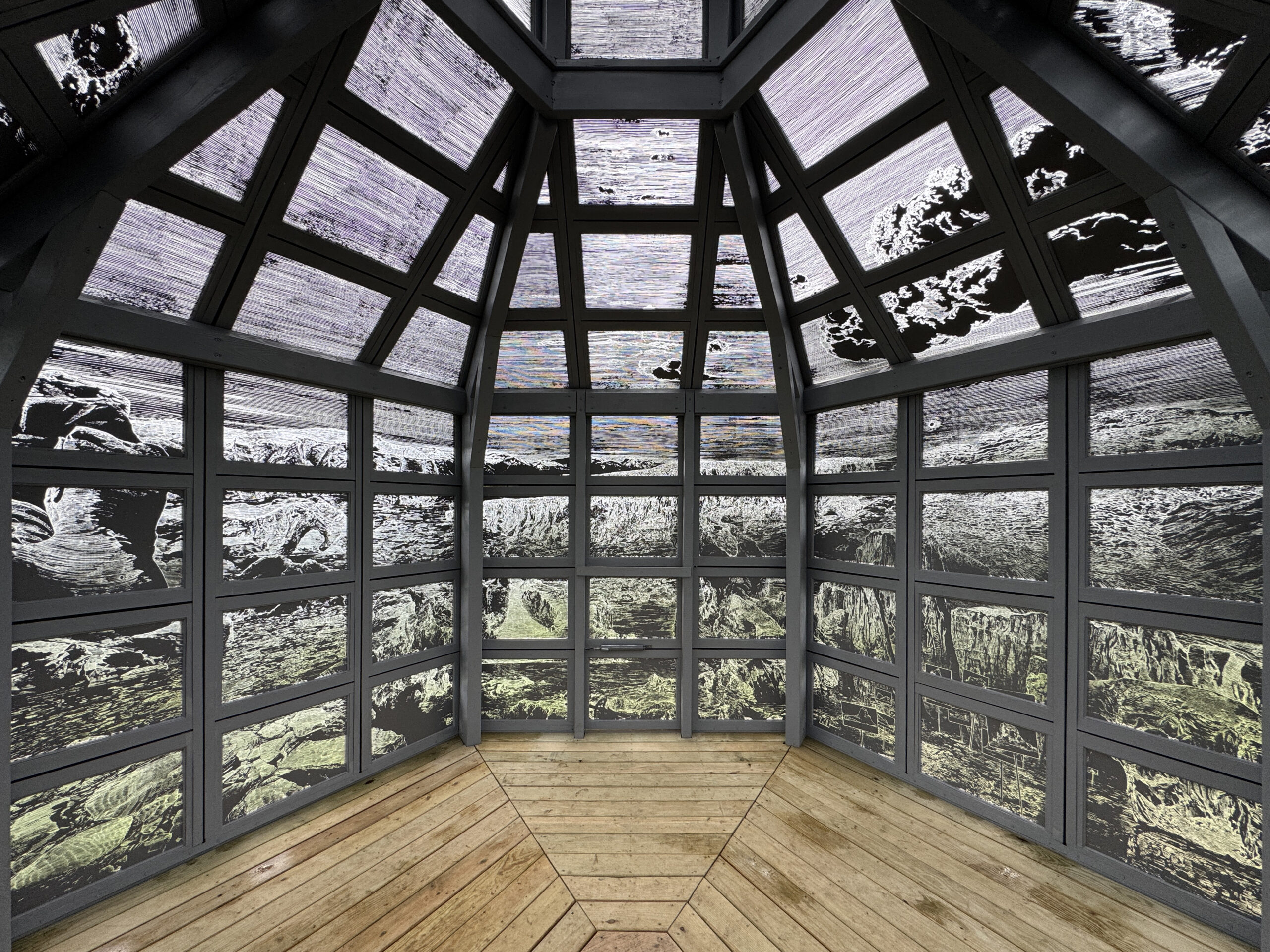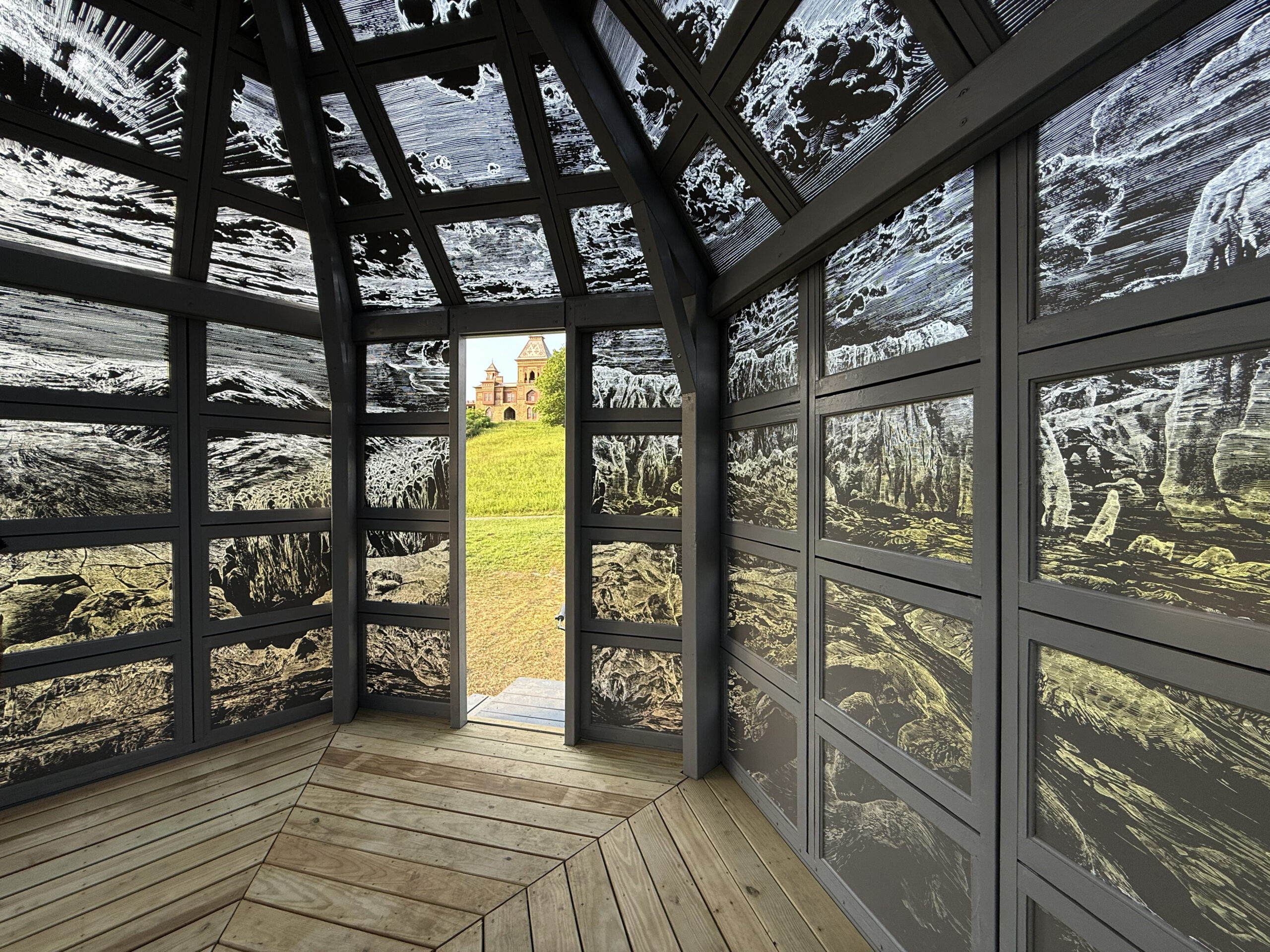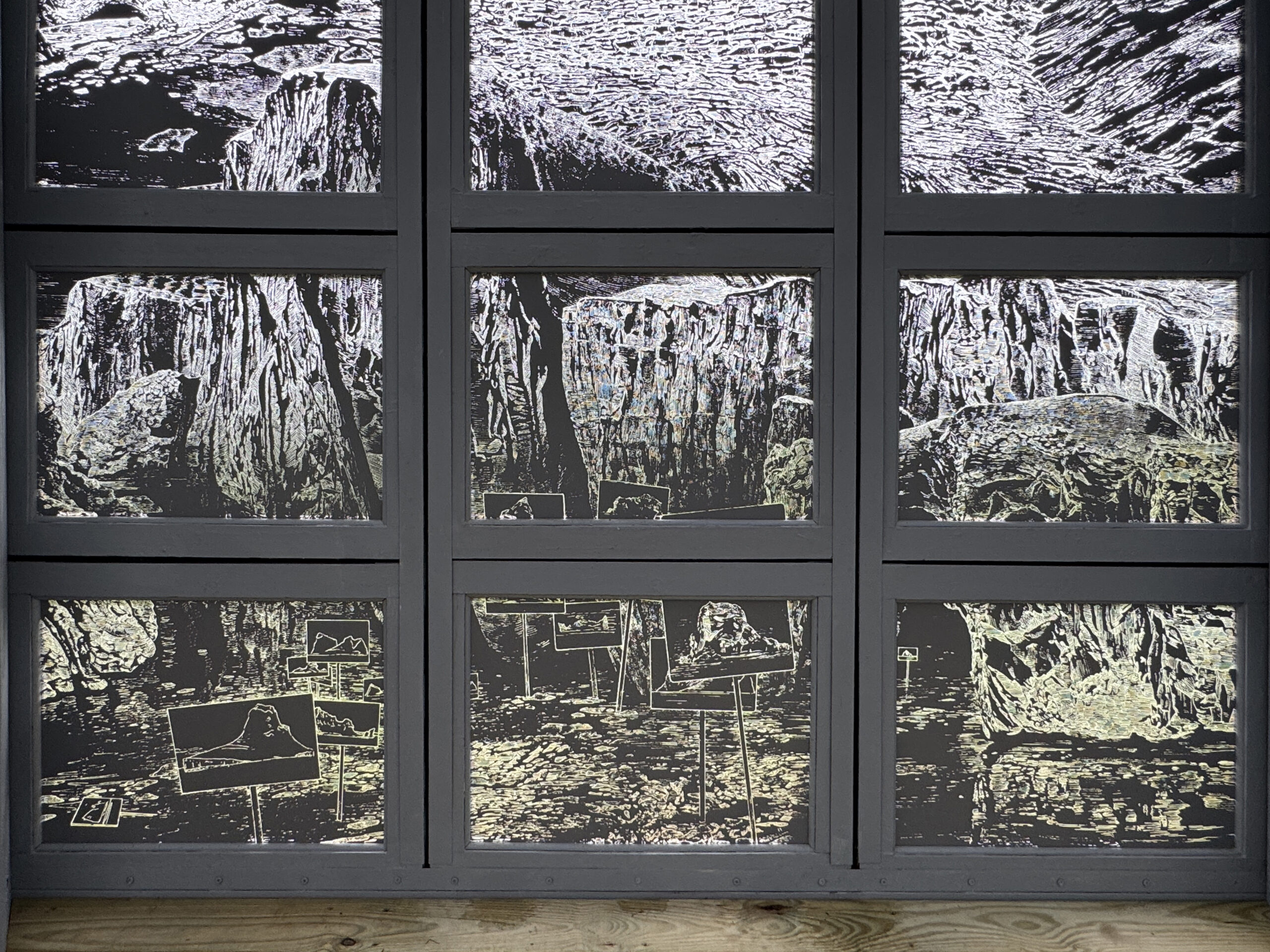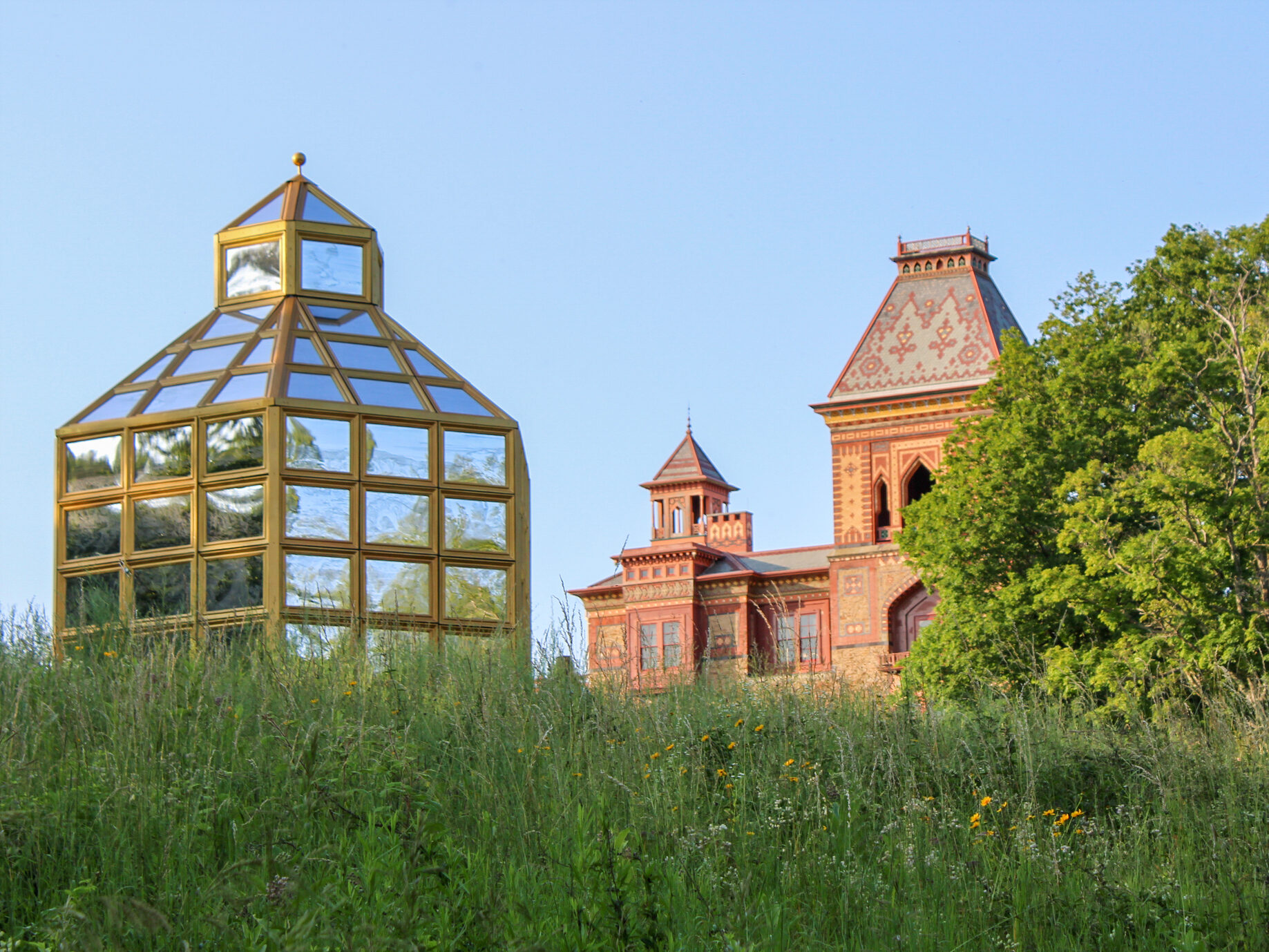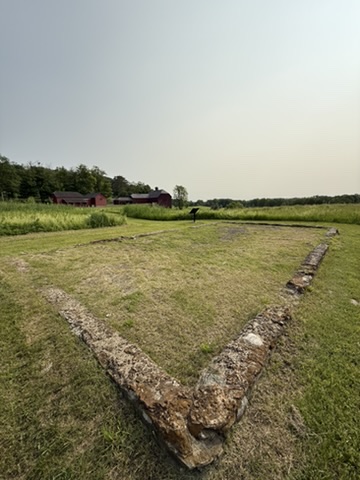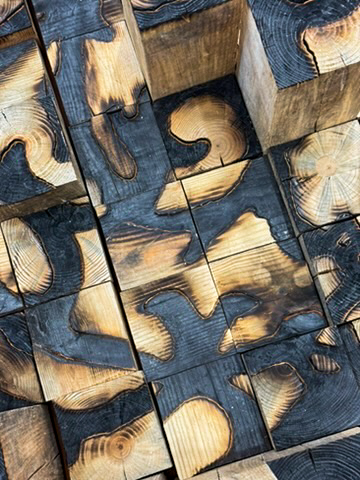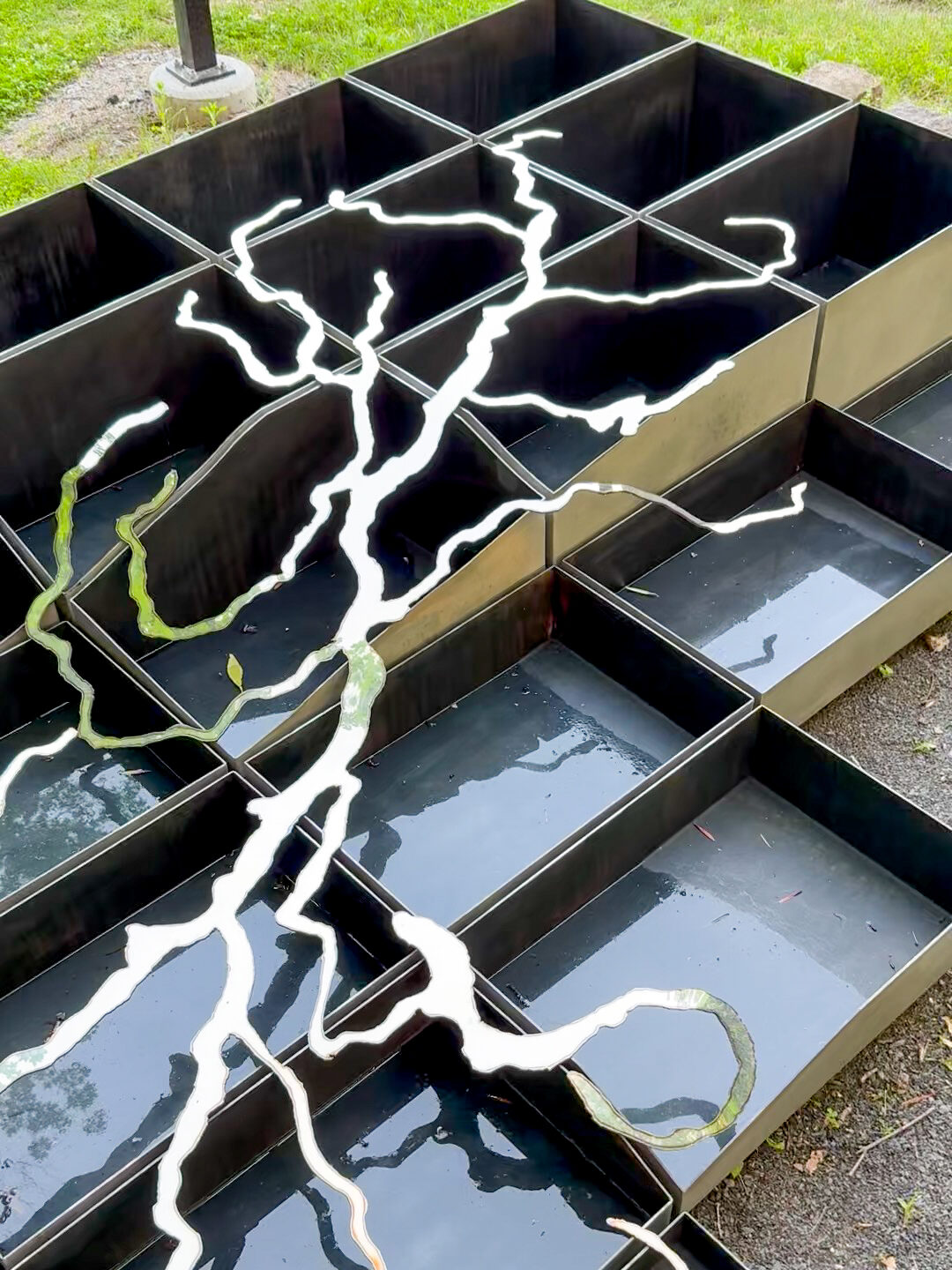EXHIBITIONS
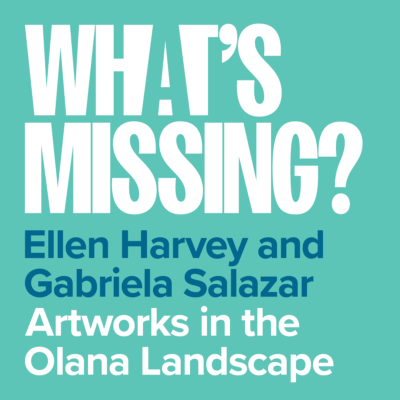
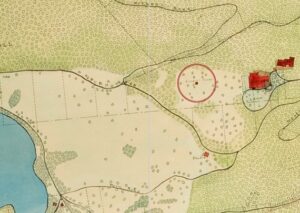
Olana’s 250-acre naturalistic landscape was designed by Frederic Church between 1860 and 1900 and is the most intact historic artist’s environment in the United States. Despite this remarkable state of preservation, several structures dating to Church’s time have since been removed, while others exist only in memories and personal accounts. The stories of these buildings remain embedded within Olana’s landscape, offering glimpses of a more complete history of this place and its inhabitants.
For WHAT’S MISSING?, The Olana Partnership commissioned artists Ellen Harvey and Gabriela Salazar to create outdoor artworks that respond to several missing pieces of Olana’s landscape.
JUMP TO
ELLEN HARVEY
Winter in the Summer House
ARTIST STATEMENT: Winter in the Summer House activates the site of Olana’s “summer house,” a structure for which no physical evidence remains, but was depicted on an 1886 Landscape Plan of Olana. The installation takes the form of a hexagonal gazebo constructed entirely of gold framed mirrors, reflecting views of Olana’s landscape and viewshed, and allowing the public to inhabit the role of artist and compose their own views. The mirrors are engraved with a composite drawing of an icy landscape of melting glaciers and protest signs, reproduced from a meticulous full-sized drawing.
When visitors enter the structure, the drawing is made suddenly visible by sunlight filtering through the engraved lines. These engravings serve both as an homage to Frederic Church’s famous paintings of icebergs (careful viewers will see parts of The Icebergs, 1861 and Aurora Borealis, 1865), and a commentary on the effect of climate change.
Inspiration




“Olana belongs to us all, and this piece is intended to literally and symbolically reflect that. The secret engravings on the inside of the structure are a call-out both to Frederic Church’s famous voyage to find icebergs to paint and also to his ecological legacy. He loved nature and the Hudson Valley landscape so much — and I think we all need to be inspired by that or there will be no icebergs left to paint.”
Ellen Harvey

Ellen Harvey is a British-born conceptual artist whose work ranges from guerrilla street interventions like her iconic New York Beautification Project for which she painted miniature landscapes over New York’s graffiti sites to immersive institutional installations and large-scale public artworks. Her work is painting-based but utilizes a wide variety of media and participatory strategies to explore several reoccurring themes such as the social and ecological implications of the picturesque, the revolutionary potential of nostalgia, the conflict between advertising and ornament in public space, the relationship between art and tourism and the role of art and the artist in our society. Ellen lives and works in Brooklyn and is represented by Locks Gallery (Philadelphia) and Meessen Gallery (Brussels, Belgium).
GABRIELA SALAZAR
A Measure of Comfort (Cake and Cord)
ARTIST STATEMENT: A Measure of Comfort (Cake and Cord) is a pair of interrelated sculptures installed on the former woodshed and icehouse foundations in the Olana landscape. Historically, ice from Olana’s lake was cut and stored in the icehouse in blocks, or “cakes” for refrigeration, while wood cut from trees on the property was burned for heat. A Measure of Comfort reflects on these bygone methods of harvesting natural resources—wood and ice—for human comfort, while pointing to the challenge of maintaining control over temperature, and the peril to the environment in doing so. Today we rely on more advanced technologies to heat and cool, and yet more than half of the energy used in homes still goes into heating and cooling. As climate change intensifies extreme weather events, the pursuit of “comfort” (livable temperatures and conditions) is increasingly urgent, necessitating continued evolution in our technologies, but also a reassessment of our relationship with temperature. A Measure of Comfort explores this evolving relationship between people, nature, and climate systems.
On the site of the former woodshed, beams of Southern yellow pine—remnants recycled from a previous project—are arranged vertically to form an uneven floor, or landscape. The volume of wood equals approximately one cord (128 cubic feet), referencing traditional units of measurement for firewood. Charred into the surface is the pattern of a decorative heating grill from Olana’s Historic House. This process created biochar, referencing former agricultural uses of the land, and suggesting one of the many ways forward towards a less carbon-intensive future.
Contiguous with the history of managing the woods and planting trees at Olana is a record of ice harvesting on the lake, which in Church’s time used to freeze over regularly. The sculpture at the icehouse site reimagines a typical 19th-century ice “cake” through a series of reflective stainless steel water containers, descending in size. These containers will hold rainwater, naturally filling and evaporating over time. A mirrored stainless-steel design, inspired by both the Hudson River watershed and rivulet patterns formed by melting ice, overlays the surface—invoking nature’s cycles and scales.
Together, the components of A Measure of Comfort (Cake and Cord) are an homage to historical and ongoing extractions of natural resources to satisfy human comfort. They call attention to the environmental ramifications of heating and cooling, and—as we see how our needs impact both the landscape and our shared world—urge us to consider how we might redesign systems and reevaluate our essential needs towards a more integrated homeostasis.
“A Measure of Comfort (Cake and Cord) is a reflection on the relationship of the environment and natural resources to human needs for heat and cooling. [It] asks the viewer to reflect on how our desires and needs, both for our bodies and as a society, impact and shape the environment”
Gabriela Salazar
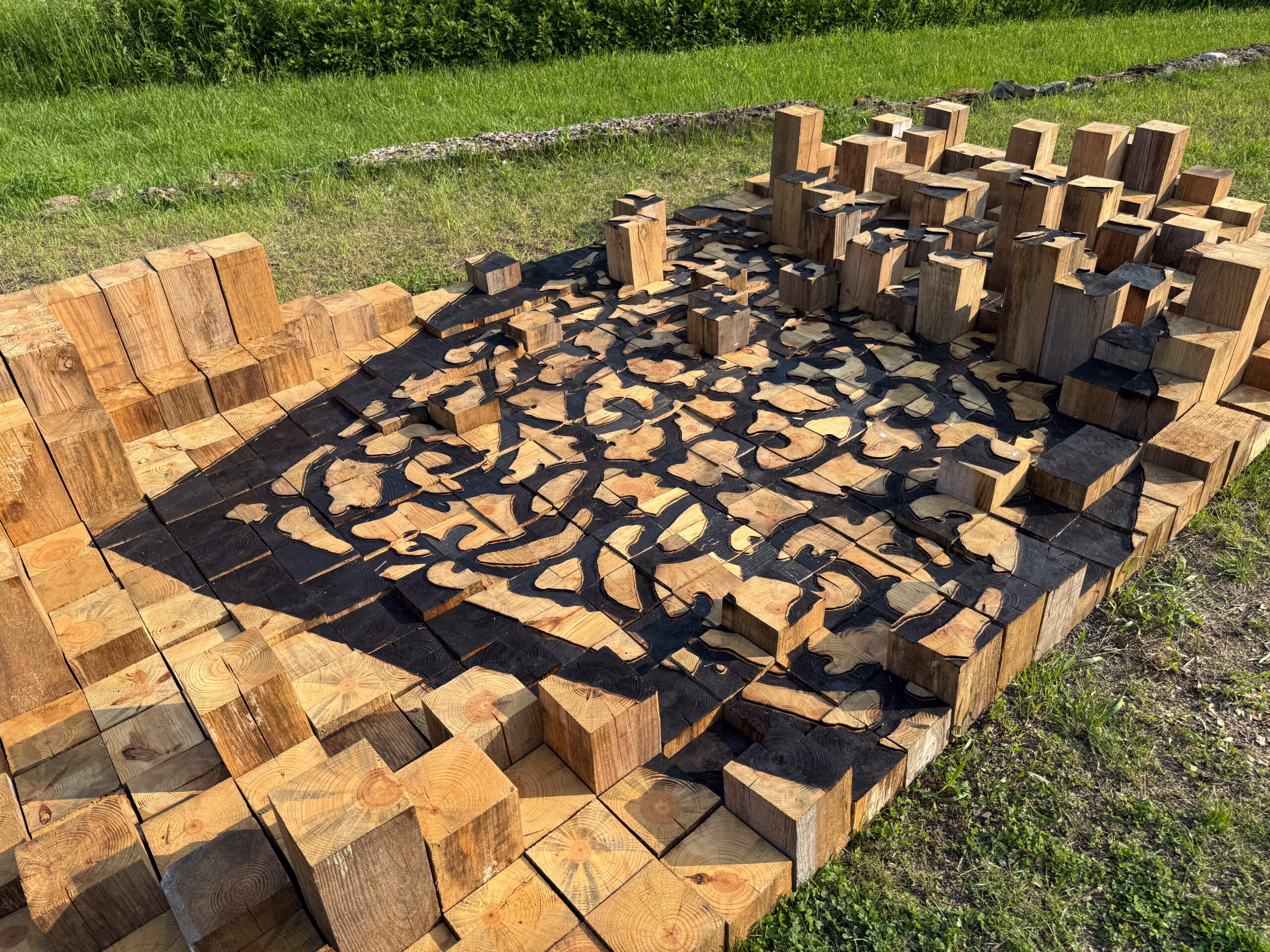


Icehouse (left) and woodshed (right) in Olana’s farm complex, photographed in Lukens & Savage’s insurance report, 1934. 8 ½ x 11 inches. New York State Office of Parks, Recreation and Historic Preservation, Olana State Historic Site, Gift of J. Andrew Lark, OL.1996.1.34.15 and OL.1996.1.34.8.
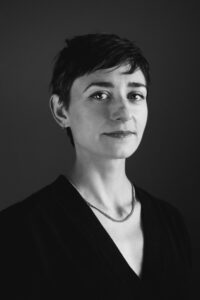
Gabriela Salazar was born in New York City to architects from Puerto Rico. She has had solo exhibitions at Efraín López, New York; NURTUREart, Brooklyn; The Bronx River Arts Center; The Lighthouse Works, Fishers Island; Efrain Lopez Gallery, Chicago; The River Valley Arts Collective at the Al Held Foundation, New York, and with the Climate Museum, in Washington Square Park, NYC. Her work has been included in group shows at Socrates Sculpture Park, the Queens Museum, El Museo del Barrio, The Drawing Center, Candice Madey Gallery, David Nolan Gallery, Someday Gallery, Storm King Art Center, and the Whitney Museum. Salazar’s work has also appeared in The New York Times, The New Yorker, hyperallergic, and The Brooklyn Rail. Residencies include Workspace (LMCC); Yaddo, MacDowell, Skowhegan School of Painting & Sculpture, Abrons Arts Center, “Open Sessions” at The Drawing Center, and the Socrates Emerging Artist Fellowship. In 2023 she was named a NYFA/NYSCA Fellow in Craft/Sculpture from The New York Foundation of the Arts. She holds an MFA from Rhode Island School of Design, a BA from Yale University, and lives, works, and teaches in NYC.
UPCOMING EVENTS
The Olana Partnership is the 501(c)(3) not-for-profit cooperative partner of the New York State Office of Parks, Recreation and Historic Preservation at Olana State Historic Site. The Olana Partnership thanks the staff of New York State Office of Parks, Recreation and Historic Preservation, Taconic Region and the Bureau of Historic Sites for their assistance with this exhibition.
WHAT’S MISSING?: Artworks in the Olana Landscape is made possible with support from donors to The Olana Partnership’s Novak-Ferber and Public Access Funds. Winter in the Summer House is made possible by the New York State Council on the Arts with the support of the Office of the Governor and the New York State Legislature. Additional support for Winter in the Summer House is provided by Dianne Young and Jim Lewis, and by the Foundation for Contemporary Arts. In-kind support has been provided by Taconic Engineering, DPC. General support for The Olana Partnership’s programs is provided by the New York State Council on the Arts with the support of the Office of the Governor and the New York State Legislature.



